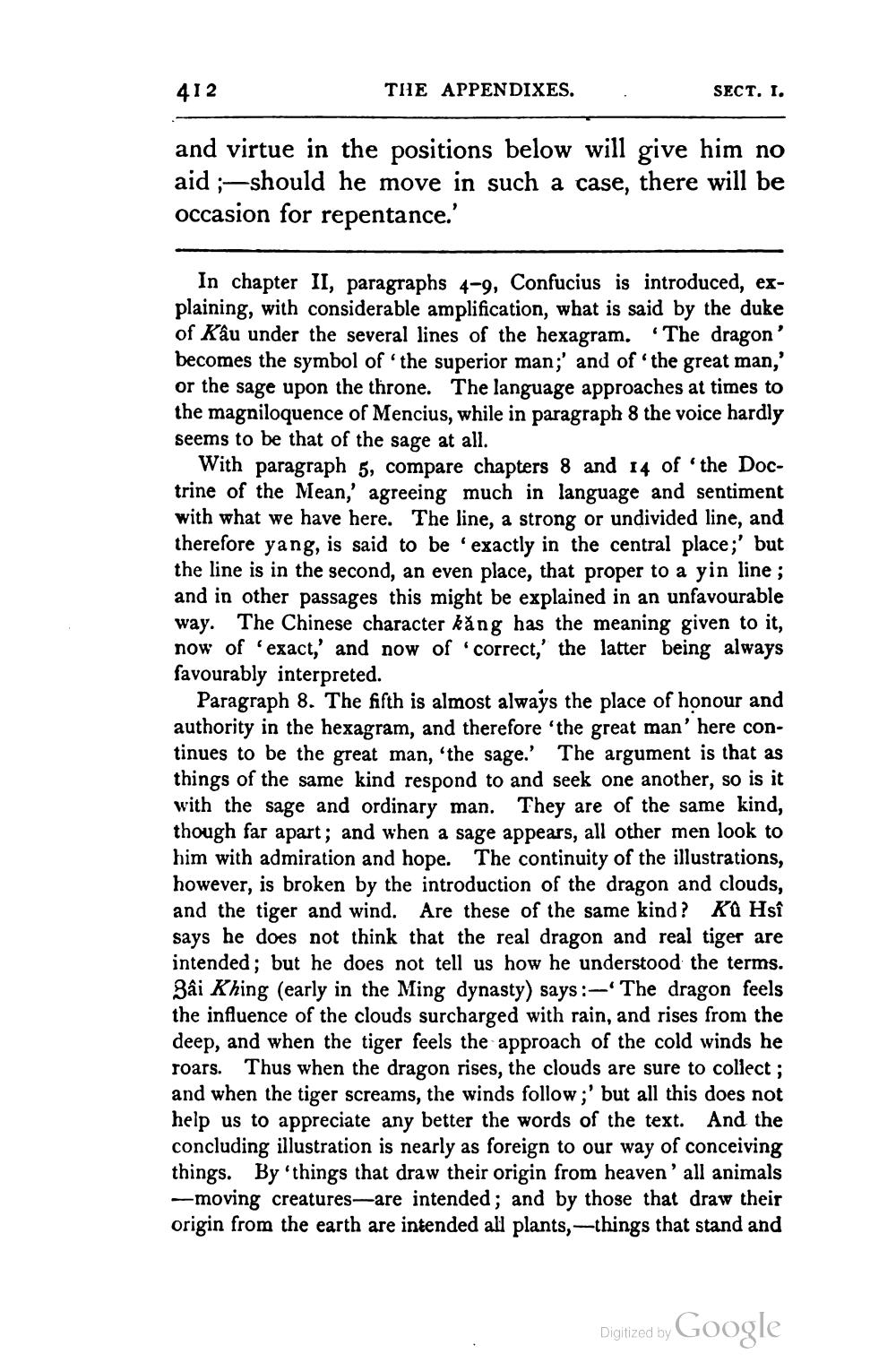________________
412
THE APPENDIXES.
SECT. I.
and virtue in the positions below will give him no aid ;-should he move in such a case, there will be occasion for repentance.'
In chapter II, paragraphs 4-9, Confucius is introduced, explaining, with considerable amplification, what is said by the duke of Kau under the several lines of the hexagram. The dragon becomes the symbol of the superior man;' and of the great man,' or the sage upon the throne. The language approaches at times to the magniloquence of Mencius, while in paragraph 8 the voice hardly seems to be that of the sage at all.
With paragraph 5, compare chapters 8 and 14 of the Doctrine of the Mean,' agreeing much in language and sentiment with what we have here. The line, a strong or undivided line, and therefore yang, is said to be exactly in the central place;' but the line is in the second, an even place, that proper to a yin line; and in other passages this might be explained in an unfavourable way. The Chinese character kăng has the meaning given to it, now of exact,' and now of correct,' the latter being always favourably interpreted.
Paragraph 8. The fifth is almost always the place of honour and authority in the hexagram, and therefore 'the great man' here continues to be the great man, 'the sage.' The argument is that as things of the same kind respond to and seek one another, so is it with the sage and ordinary man. They are of the same kind, though far apart; and when a sage appears, all other men look to him with admiration and hope. The continuity of the illustrations, however, is broken by the introduction of the dragon and clouds, and the tiger and wind. Are these of the same kind? Ka Hsî says he does not think that the real dragon and real tiger are intended; but he does not tell us how he understood the terms. Zâi Khing (early in the Ming dynasty) says: The dragon feels the influence of the clouds surcharged with rain, and rises from the deep, and when the tiger feels the approach of the cold winds he roars. Thus when the dragon rises, the clouds are sure to collect; and when the tiger screams, the winds follow;' but all this does not help us to appreciate any better the words of the text. And the concluding illustration is nearly as foreign to our way of conceiving things. By things that draw their origin from heaven' all animals -moving creatures—are intended; and by those that draw their origin from the earth are intended all plants,-things that stand and
Digitized by
Digitized by Google




